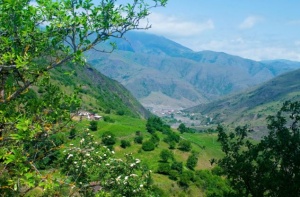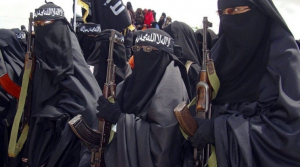
The mountains of Chechnya where “going to the forest” is a colloquial term for joining an extremist group. Photo Credit: eTurboNews.
A series of recent incidents validate the Russian Federation’s concerns over the rise of internationally-linked terrorist groups active within its territory. This security matter is heightened by the presence of battle-hardened fighters who returned from fighting in the Middle East and North Africa. The main query that emerges is whether Russian authorities will amend their counterterrorism tactics, or continue to engage in a framework simplified as a nexus of a military-bureaucratic-judicial instruments.
Russia has long contended with the dilemma of homegrown terrorism, especially in the North Caucasus region. Radicalization and the development of terror cells were intrinsically linked to the Chechen independence movement that expanded into neighboring Dagestan. Ayman al-Zawahiri (the current head of Al- Qaeda) once called the region ‘a shelter’ for fighters from across the globe. It is little wonder then that Daesh capitalized on homegrown ethnic grievances in Russia’s ‘inner abroad’ for recruitment.
Russian officials estimate that approximately 4000 citizens fought as militants in the armed conflicts in Syria. The state of affairs shifted domestically too. Militants that once operated under the banner of Imarat Kavkaz (Caucasus Emirate) transferred allegiances to Vilayat Kavkaz — a branch of Daesh in the North Caucasus. Russia identifies the pan-Islamist political movement Hizb ut- Tahrir (Party of Liberation) as a terrorist organization, and deems it culpable in the recruitment of foreign fighters as well. It is undoubtedly a case where international groups seized upon already active movements to franchise ideologies.
As a consequence, recent terror-related events in Russia are linked to the international moniker of Daesh, although the actors are domestic agents. The Federal Security Service (FSB) conducts operations across Russia linked to Daesh through a perpetrator’s affiliation, but few links to the umbrella organization. For instance:
• April 13: two suspected members were killed in a raid in Tyumen; an oil rich town in Siberia.
• June 26: a declared member who created explosives and sought to carry out attacks in the name of Daesh was neutralized in Saratov; a city in the southwest.
• July 1: police in Khanty-Mansi (a region in western Siberia) sent out an alert of a woman suspected of membership in an international terrorist organization being in the area.
• July 12: Moscow District Court sentenced seven members of Daesh to 15-21 years of incarceration for planning to attack the Sapsan train in Saint Petersburg in 2017.
These cases exhibit a Russian reliance on strict legislation and applications of force as primary counterterror tactics. Numerous laws have been passed, including the revocation of citizenship for naturalized citizens, life sentences for some terror-related crimes, and guidelines aimed to counter proliferation of extremist ideology, especially the contentious Yarovaya package.
A preference for the military-bureaucratic-judicial nexus and intelligence collection means psychological rehabilitation and cultural efforts receive less attention. Up until 2013, Russia applied such methods until preparations for the Sochi Olympics required hardline policies. However, emphasis on these two spheres provide Russian authorities with a humanitarian method to prevent radicalization before it takes root, and to counterbalance extremist teachings post-indoctrination, to those willing to relent. This is a key recommendation that needs to be met at many levels.
Those at risk of radicalization must be exposed to civil society organizations that promote tenets of inter-ethnic and inter-religious dialogue. Exposure to educational and employment prospects, tolerant views amongst peers, and wider community solidarity provide numerous opportunities for exchange.
Preservation of cultural traditions that display a wider understanding of ethnicity and religion — that have not been manipulated to advocate extremist or political views — teach at-risk youth they are already part of an important community, rather than a terrorist cell or a linked international organization. Sports provide additional occasions of solidarity, especially those that prioritize strength of character. For example, combat sports widely practiced across the region place the historic mindset of a ‘Caucasian warrior’ in a positive context, at the same time young girls practicing tightrope walking in Dagestan are taught to be ‘fearless’.
Psychological supports and deradicalization initiatives are of vital importance in the current context. These programs are especially beneficial to returnees willing to shun extremist views as they are offered a path towards redemption, as well as chances to inform at-risk peers of the realities of membership in such groups. The Comprehensive Plan of Counteraction of Ideology of Terrorism 2019-2023 reveals provisions covering this matter. As well, a member of the Russian State Duma announced the development of a rehabilitation center focused on individuals influenced by Hizb ut- Tahrir in annexed-Crimea, though it is viewed as politically motivated.
The Russian Federation strongly relies on military-bureaucratic-judicial methods as violent extremism and terrorism are serious infractions under the criminal code, as they should be. It seems easier to manage the localized and decentralized nature of domestic extremism in that framework. However, such hardline measures should be employed concurrently with softer methods aimed at prevention and redemption. They offer broader social advantages in totality.
Réjeanne Lacroix is the Editor-in-Chief at Rise to Peace.







